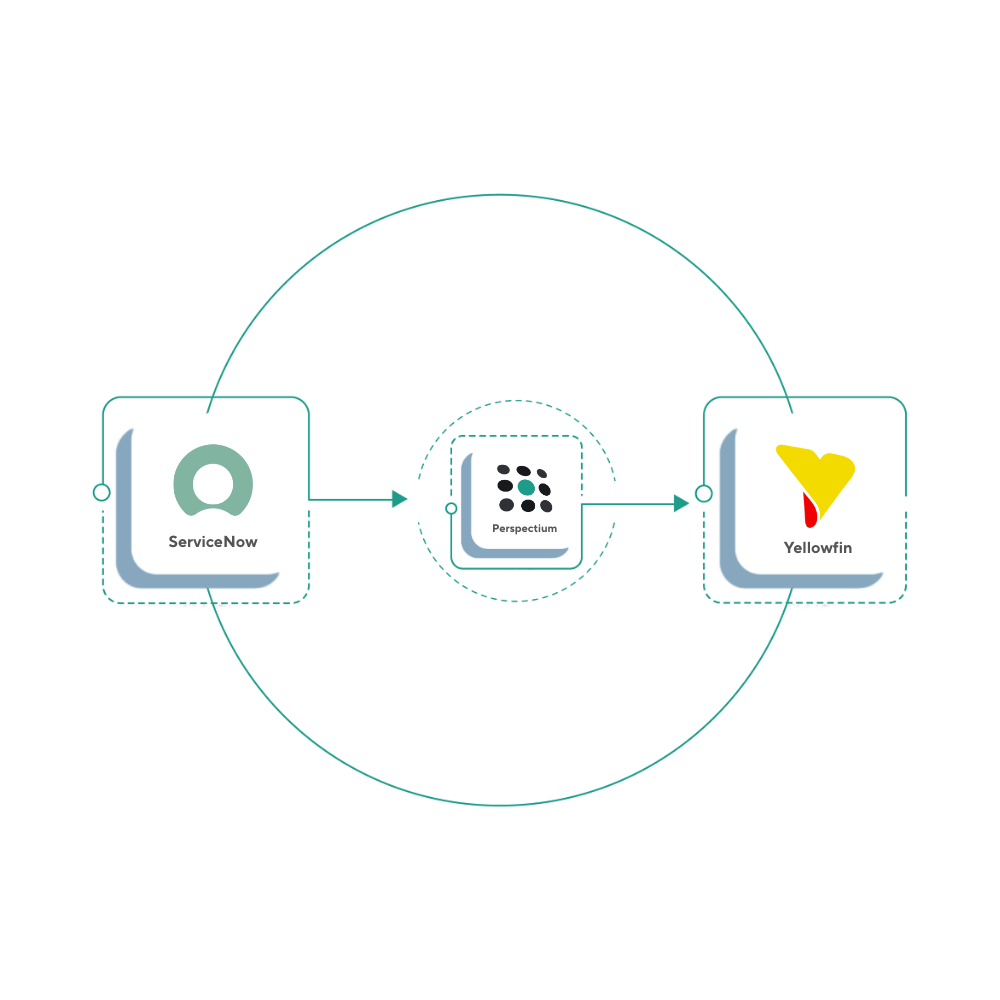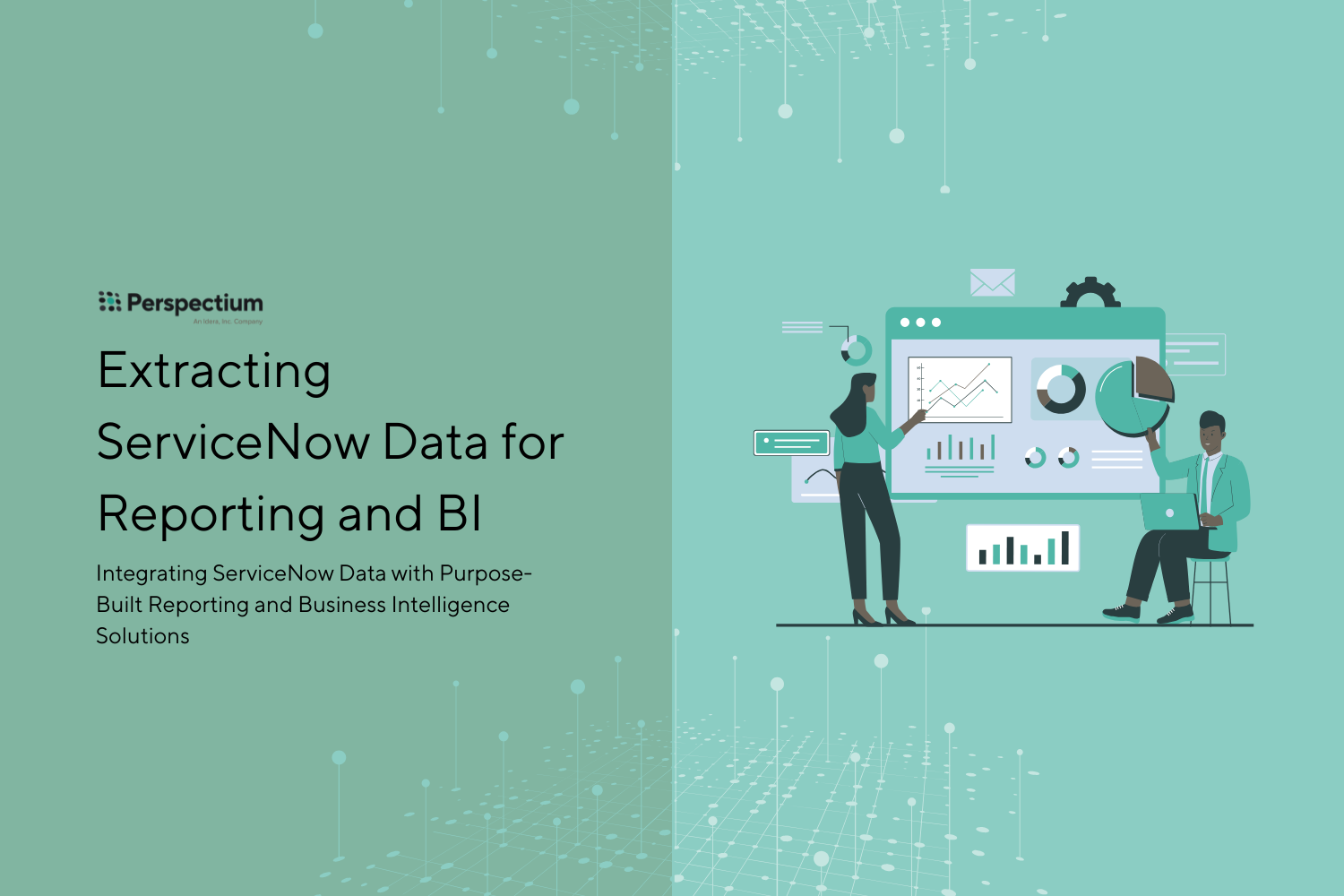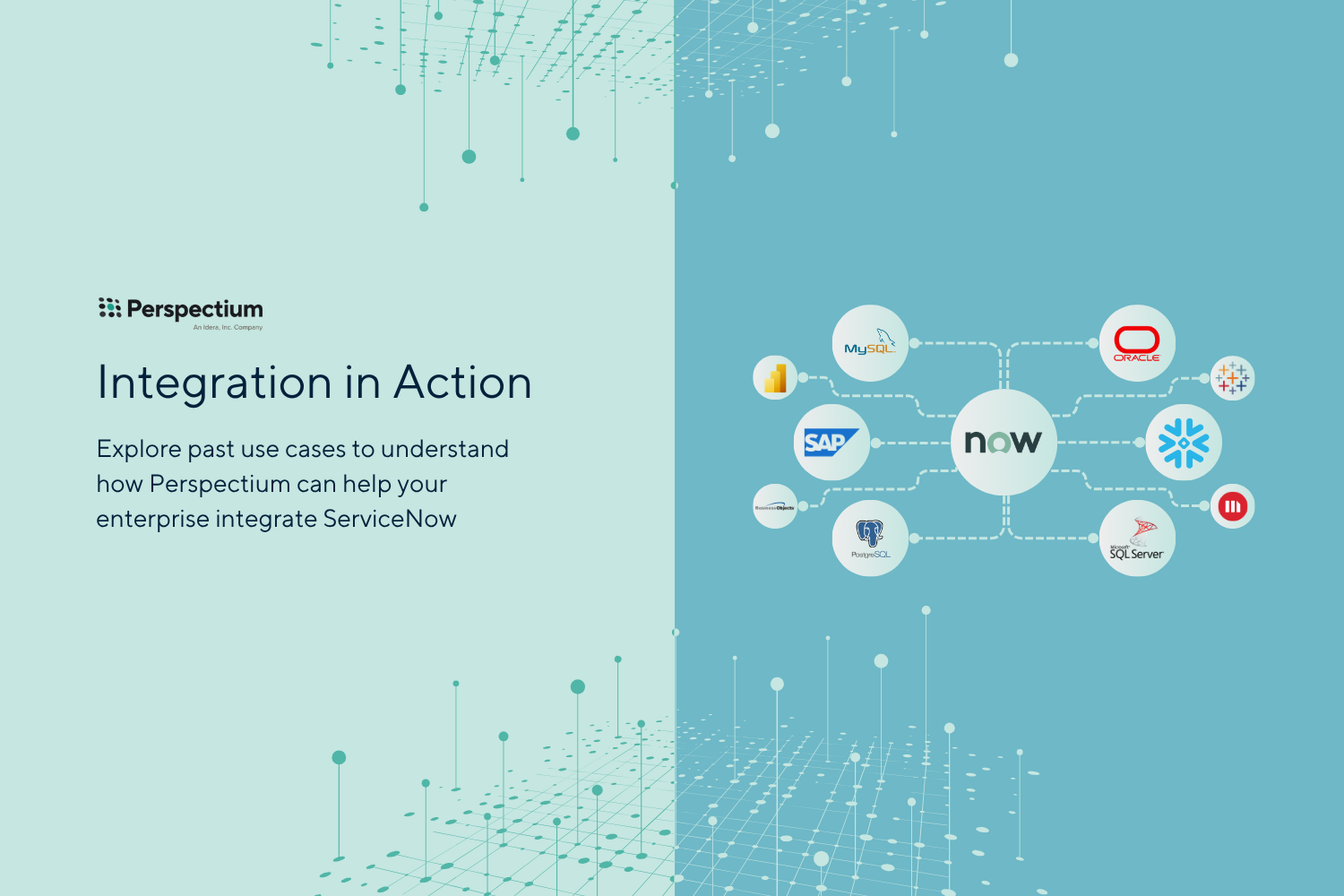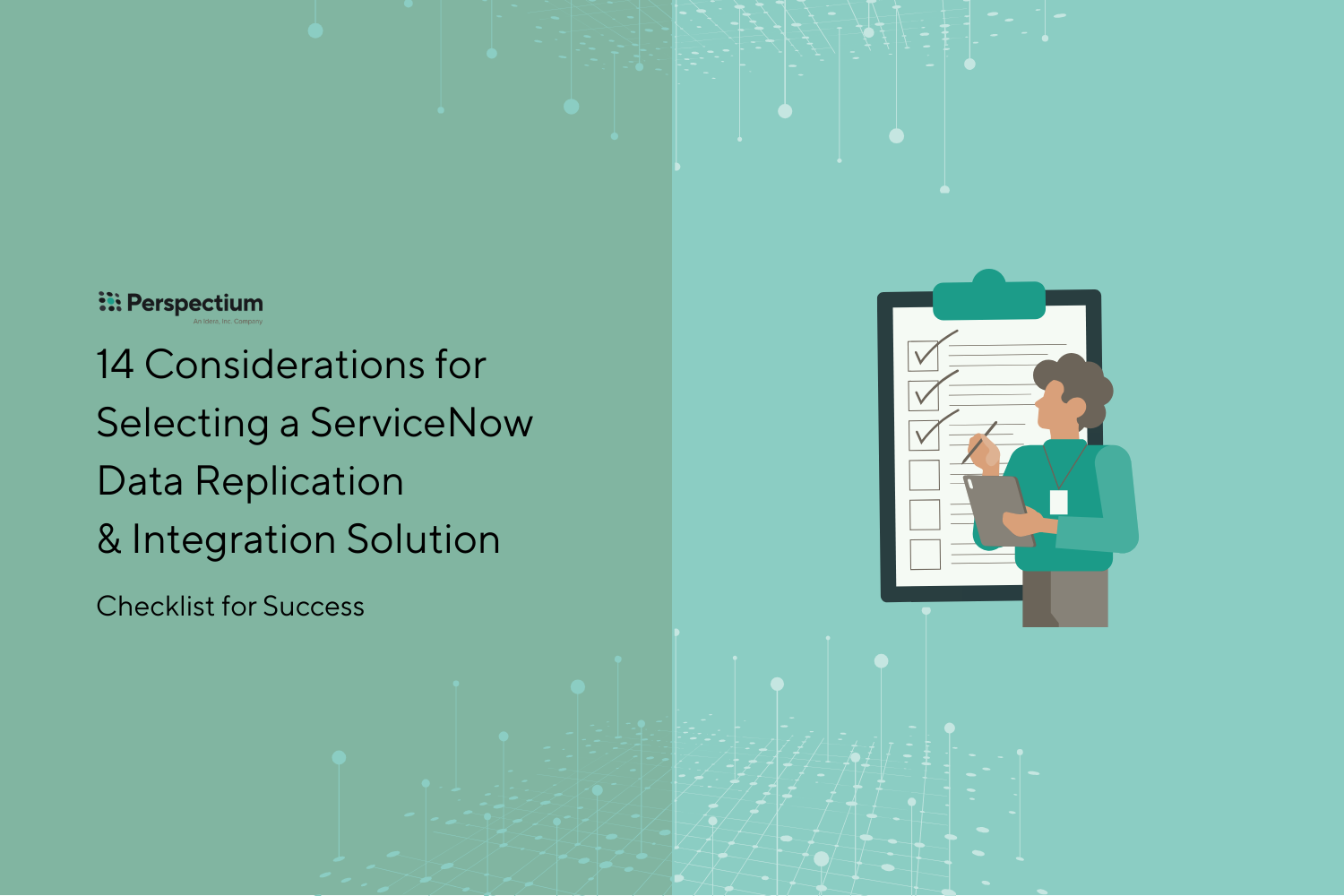What Is A ServiceNow and Yellowfin Integration?
A ServiceNow and Yellowfin integration connects ServiceNow’s powerful IT service management (ITSM) platform with Yellowfin, a modern business intelligence (BI) tool known for its interactive dashboards, embedded analytics, and automated data storytelling.
This integration enables organizations to make ServiceNow data both visible and actionable within Yellowfin.
Once data is replicated, users can track key ITSM metrics—such as SLA performance, incident resolution times, and change risks—through real-time dashboards and dynamic visualizations.
Yellowfin provides more flexibility and depth in data analysis than ServiceNow alone, empowering faster and more informed decision-making.
A key benefit of this integration is the ability to combine ServiceNow data with other enterprise sources like Salesforce, Jira, SAP and Oracle. This unified view helps teams collaborate more effectively and gain a comprehensive understanding of business performance.
Whether you're aiming to optimize IT operations, improve SLA compliance, or embed ITSM insights into other applications, integrating ServiceNow with Yellowfin offers a scalable analytics foundation that supports smarter, faster decisions across the organization.
Connect ServiceNow to Your Enterprise
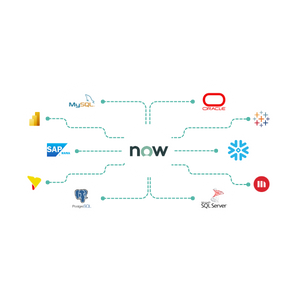
Integrate ServiceNow with the rest of your enterprise and replicate over 40 million records every day.
Benefits of Integrating ServiceNow and Yellowfin
While ServiceNow excels at managing and executing IT operations, its native reporting capabilities can be limited when it comes to enterprise-level analytics, automated alerts, and data storytelling. By replicating ServiceNow data into Yellowfin—particularly through a high-performance integration solution like Perspectium—organizations gain access to a powerful suite of strategic, operational, and technical advantages:
1. Advanced Analytics & Storytelling
Yellowfin enables rich visualizations and narrative reporting that go far beyond ServiceNow's built-in reports. With Perspectium feeding live ServiceNow data into your Yellowfin environment, you can:

- Build interactive dashboards with real-time filtering and drilldowns
- Trigger Yellowfin Signals to detect changes in ITSM patterns (e.g., SLA breaches, spike in incidents)
- Use Stories to create guided narratives around incident trends or change failures
- Align IT performance with business goals through visual storytelling
2. Cross-Platform Data Integration
Yellowfin supports seamless blending of ServiceNow data with other business systems, allowing you to:
- Join ITSM metrics with CRM, ERP, HR, or DevOps tools
- Track workflows from issue creation in ServiceNow to resolution and financial impact in ERP systems
- Support leadership with cross-functional dashboards tied to real KPIs.
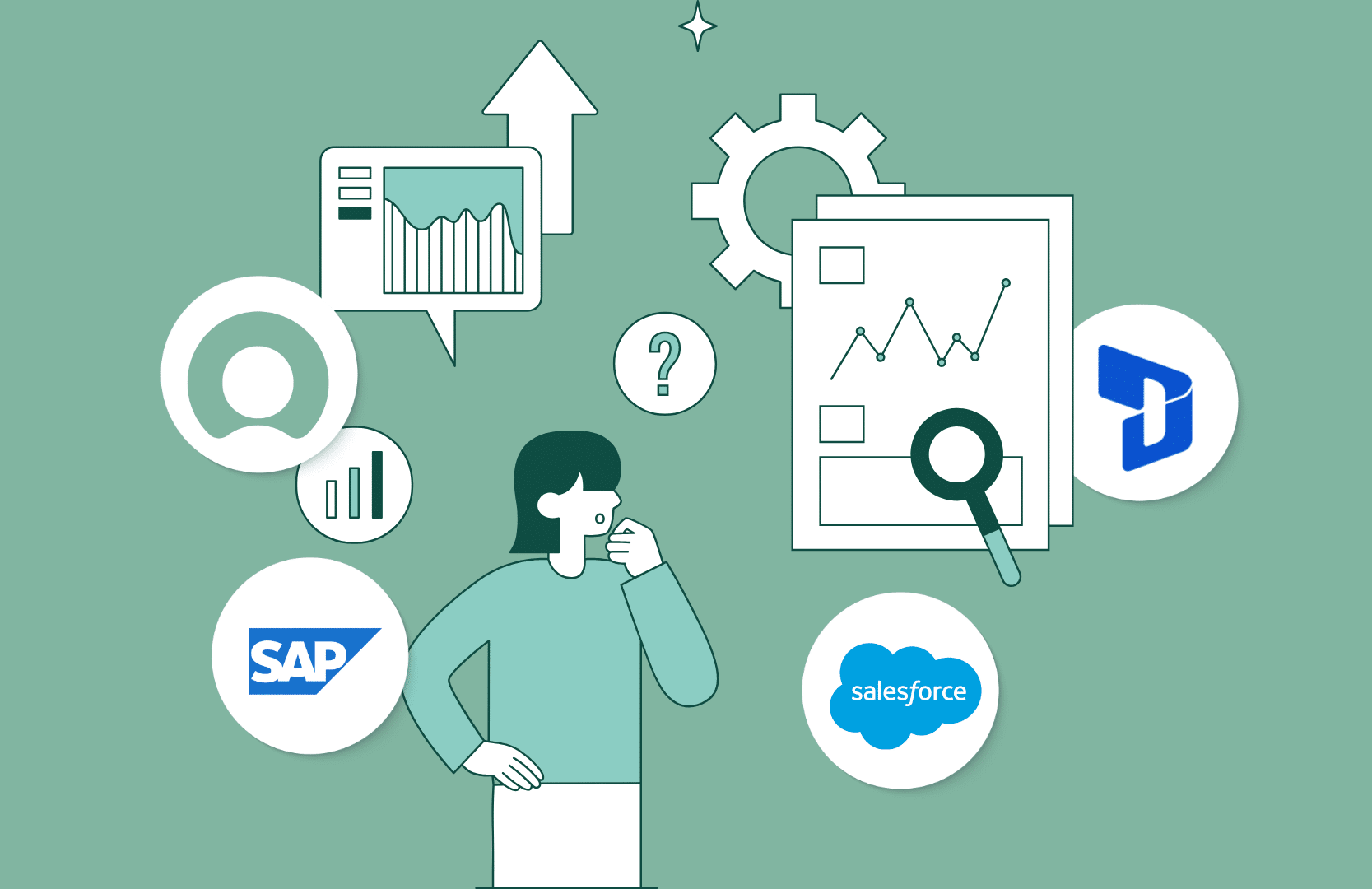
3. Performance Optimization
Running reports inside ServiceNow creates performance issues. Replicating data into Yellowfin avoids this, because it:

- Keeps ServiceNow optimized for workflow automation and ticketing
- Enables higher-frequency refreshes and deeper analytics in Yellowfin
- Offloads reporting from ServiceNow to Yellowfin, to prevent reporting from consuming ServiceNow's operational resources and slowing down the platform
4. Scalability & Flexibility
Paired with your existing data warehouse or supported database, Yellowfin can ingest large-scale ServiceNow datasets:
- Ingest millions of records per day from a wide range of supported data repositories
- Support real-time or scheduled refreshes for continuous insights
- Retain huge volumes of ServiceNow data for analysis, without impacting ServiceNow's performance
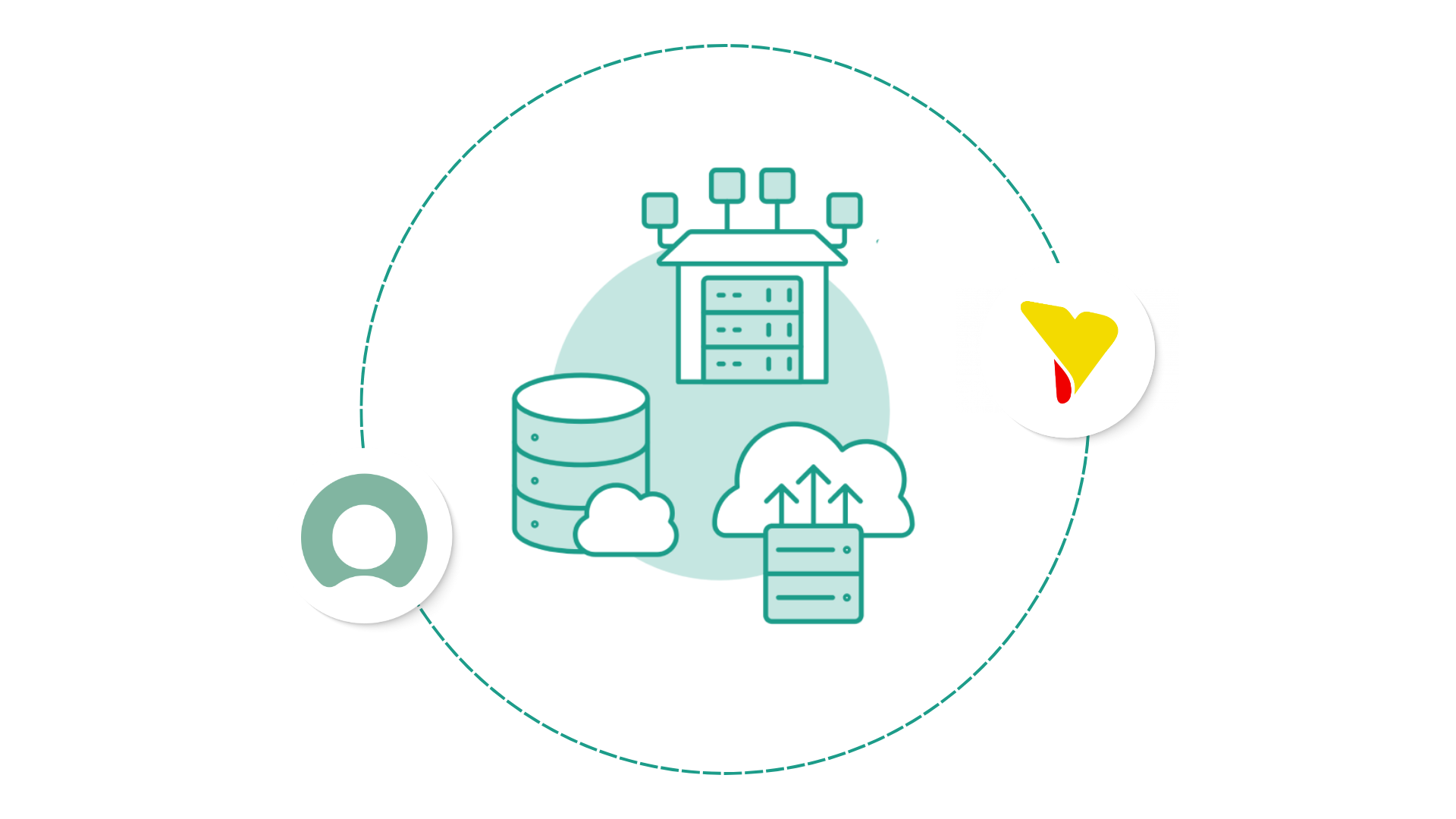
5. Collaboration & Embedded Analytics
Integrating ServiceNow with Yellowfin supports collaborative workflows across the business:

- Share dashboards with teams that don’t use ServiceNow—no extra licenses required
- Embed ITSM insights into customer or employee portals
- Enable non-technical users to explore ServiceNow data without needing back-end access
- Promote a data-driven culture through intuitive, role-based storytelling
6. Automation & Alerting
Pairing real-time ServiceNow data with Yellowfin’s automation capabilities enables:
- Automated notifications when incidents spike or SLAs are breached
- Data-driven Signals that detect anomalies and trigger responses
- Alerts delivered to business and IT teams through integrated workflows
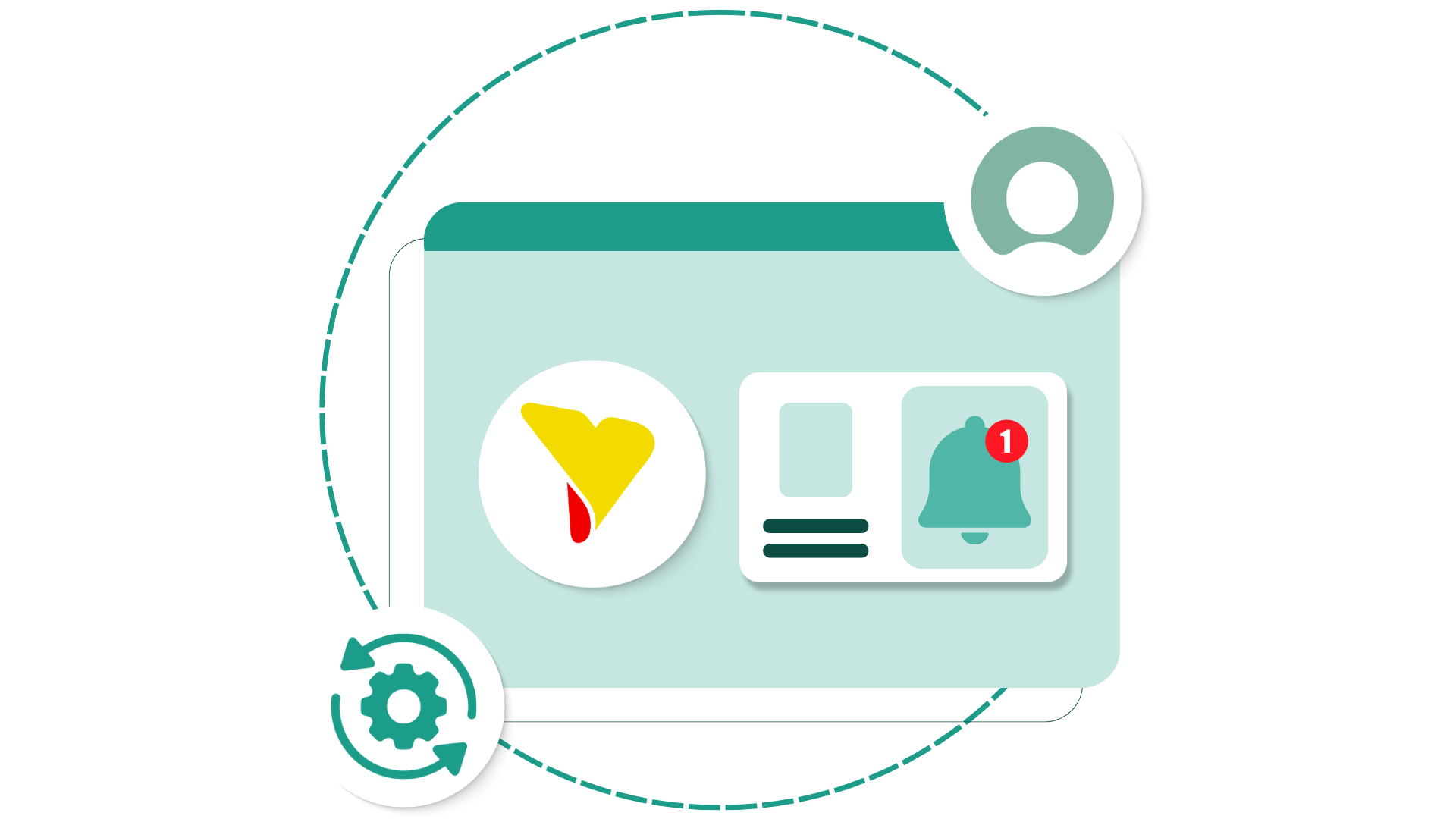
7. Optimize Storage and Reduce Overhead
Moving analytics and historical reporting out of ServiceNow reduces system load and cost:
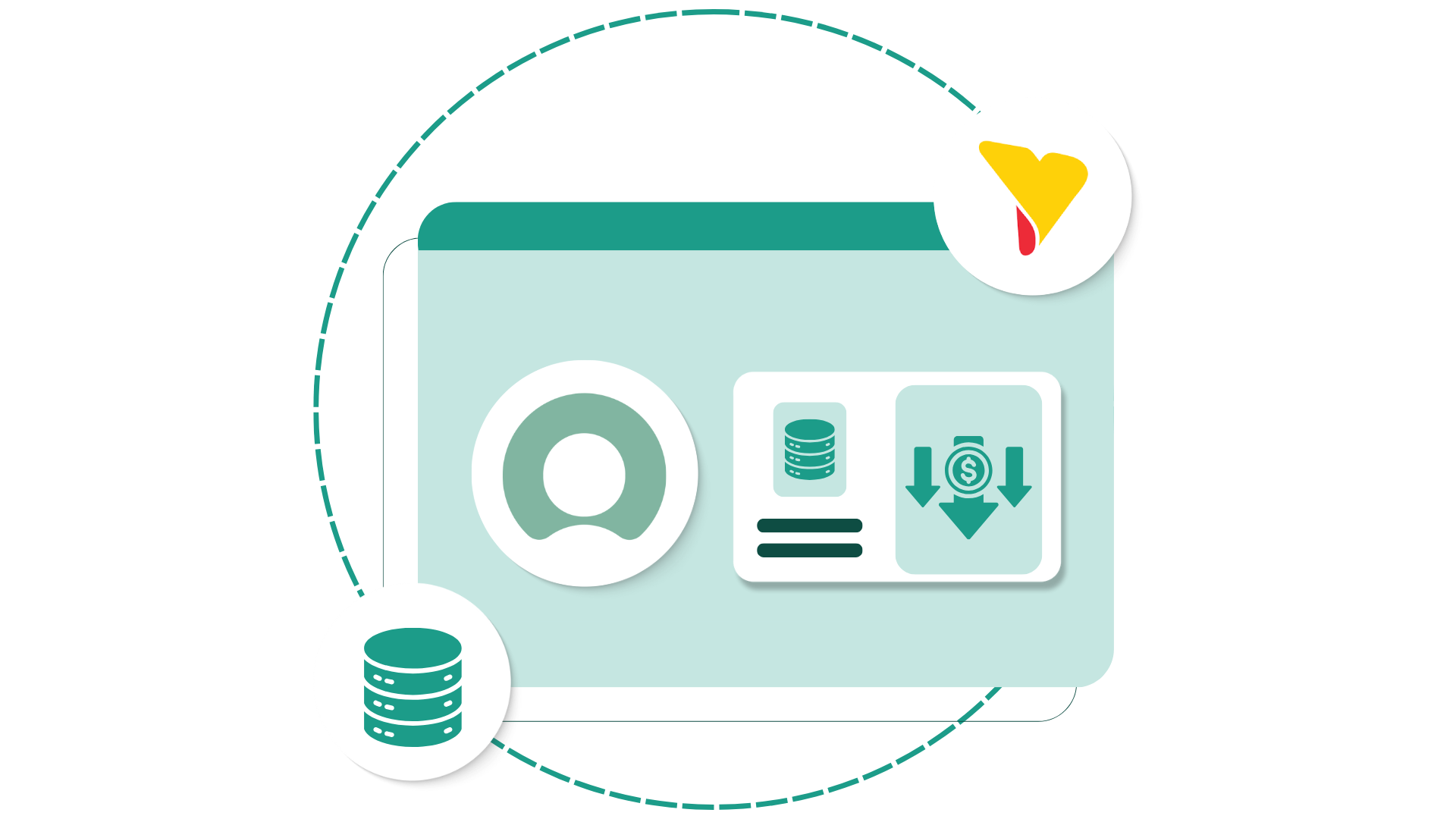
- Offload analytical workloads into Yellowfin-compatible databases
- Minimize ServiceNow storage usage and avoid additional licensing or storage fees
- Preserve long-term historical ITSM data for compliance and reporting in Yellowfin
Extracting ServiceNow Data for Reporting and BI
Integrating ServiceNow and Yellowfin? Download this free best practices guide to learn what you need to know before starting.
Extracting ServiceNow Data for Reporting and BI
Integrating ServiceNow and Power BI? Download this free best practices guide to learn what you need to know before starting.
The Perspectium ServiceNow and Yellowfin Connector
Perspectium provides a robust enterprise-grade solution for integrating ServiceNow data seamlessly with analytics platforms like Yellowfin, ensuring effortless, high-volume data replication. This integration empowers you to access powerful analytics, receive real-time alerts, and deliver dynamic visual storytelling—all without affecting the performance of your ServiceNow instance.
In contrast to generic connectors or manual ETL processes, Perspectium’s integration is specifically designed for simplicity whilst enabling large-scale, real-time data delivery. You no longer need to rely on developers, custom scripts, or manage API rate limits. Perspectium’s fully managed, out-of-the-box pipeline guarantees reliability, built-in governance, and expert support.
With ServiceNow data flowing directly into Yellowfin, you can:
- Create real-time dashboards that monitor ITSM KPIs such as incident volume, SLA breaches, and change success rates.
- Set up proactive alerts with Yellowfin Signals to notify when service performance deviates from expected trends.
- Develop and share actionable Yellowfin Stories, leveraging live ServiceNow data to communicate risks, trends, and insights.
Perspectium ensures enterprise-grade throughput, schema-aware replication, and comprehensive data integrity—making it the perfect solution for teams eager to incorporate real-time ServiceNow insights into Yellowfin's collaborative analytics environment.
When to Connect ServiceNow to Yellowfin
Integrating ServiceNow with Yellowfin enables organizations to replace static reports with real-time, data-driven insights into ITSM performance. If your teams are looking to extract deeper insights from ServiceNow data, now is the time to connect it to Yellowfin.
If your organization wants to achieve any of the following, then connecting ServiceNow to Yellowfin should be a strategic priority:
- Cross-platform operational reporting: Combine ServiceNow data with information from platforms like Salesforce, Jira, SAP, Oracle, and HR systems, creating a unified view of business performance.
- Real-time, collaborative dashboards: Utilize dynamic Yellowfin dashboards to monitor key ITSM metrics such as SLA compliance, change volumes, and backlog trends in real-time.
- AI-powered signals and alerts: Leverage Yellowfin to automatically detect anomalies and notify teams of potential risks and opportunities in real-time, enabling proactive actions.
- Self-service visual analytics: Grant business users secure, role-based access to ServiceNow data through interactive Yellowfin Stories and dashboards, promoting data-driven decision-making across teams.
- Scheduled and automated refreshes: Streamline the reporting process with regularly refreshed Yellowfin reports powered by synced ServiceNow data, eliminating the need for manual report generation.
- Scalable performance monitoring: Manage millions of records from ServiceNow without impacting platform performance, ensuring responsive, efficient analytics.
If you're currently facing any of the following challenges, integrating ServiceNow and Yellowfin is the solution:
- Degraded ServiceNow performance during analytics: Running large reports in ServiceNow can slow down core platform functions.
- Inflexible out-of-the-box reports: Standard ServiceNow reports often fail to meet complex business needs or customization requirements, limiting their effectiveness.
- Inflexible Out-of-the-Box Reports – Standard ServiceNow reports often fail to meet complex business needs or customization requirements, limiting their effectiveness.
- Limited Visibility Across Modules and Systems: Merging data across ITSM modules or external platforms becomes a cumbersome task, reducing visibility into overall performance.
- Manual Reporting Cycles: Generating reports manually is time-consuming and often requires heavy reliance on technical teams, slowing down decision-making.
- Lack of Modern Data Storytelling: Native reporting in ServiceNow lacks the narrative and interactive capabilities that Yellowfin’s Signals and Stories offer, reducing the depth of insights.
- Overreliance on IT for Insights: Business teams are often unable to analyze ServiceNow data independently without deep platform knowledge, creating bottlenecks and slowing the flow of information.
Integrating ServiceNow with Yellowfin provides the visibility, flexibility, and speed required to enhance ITSM strategies and ensure more efficient decision-making across the organization.
Why Standard Connectors from ServiceNow to Yellowfin Are Limited
Integrating ServiceNow with Yellowfin via standard connectors can be effective for small-scale operations. However, as data operations grow in volume and complexity, these connectors often face significant limitations. Here’s a breakdown of the key challenges:
1. Limited Throughput
Standard connectors typically rely on ServiceNow’s web services layer, which comes with several drawbacks:
- Rate limits, throttling, and timeout errors that create significant bottlenecks to throughput.
- Delays in data transfer, data synchronization errors, and pipeline failures become more frequent as data volume increases or refresh frequencies rise.
- Batch ETL processes lack flexibility and cannot meet the demand for real-time data access, making them inadequate for modern ITSM analytics needs.
Modern ITSM analytics require always-on, low-latency data access, which these connectors can’t deliver at scale.
2. Limited Scalability
Standard API-based connectors are typically built for single-source to single-destination integrations. While it's possible to use multiple API connectors to enable one-to-many data transfers from ServiceNow, this approach is inefficient. It increases the load on ServiceNow, heightens the risk of exceeding API rate limits, and can lead to noticeable performance degradation.
- Standard connectors are inefficient for one-to-many scenarios, causing performance issues.
- The need to manage several connectors results in increased failure points and administrative overhead.
- As data models evolve, scaling these connectors becomes increasingly challenging.
3. Poor ServiceNow Performance
API-based data pulls and ETL jobs can severely affect the performance of ServiceNow.
Running live queries or large data exports during business hours consumes crucial compute resources, causing:
- Decreased platform responsiveness.
- Negative impacts on ticketing, workflows, and the overall user experience.
To prevent this, it’s crucial to offload analytics tasks and replicate data asynchronously into third part solutions such as Yellowfin.
4. Limited Security and Governance
Standard API-based connectors often present significant security and governance risks.
- Widespread familiarity with API makes them a common target for cybercriminals
- Misconfiguration can lead to overexposure of sensitive ITSM data and increase the likelihood of unauthorized access.
5. Schema Compatibility Issues
Customized ServiceNow instances frequently include custom tables, extended fields, and reference relationships. Many standard connectors don’t handle these customizations reliably.
This leads to:
- Incomplete replication and data loss
- Poor data quality, misleading reports, insight and dashboards
Fixing these gaps often requires custom development and schema mapping, which increases complexity, cost, and maintenance burden.
6.Development Overhead and Upgrade Breakage
Maintaining custom connectors or scripting ETL processes tend to lead to an increase in technical debt over time.
- ServiceNow upgrades may break the integration, and schema changes or new reporting requirements trigger additional development cycles.
- This ongoing work diverts IT teams from more strategic tasks, increases the maintenance burden and complicates the overall data infrastructure.
Because of these limitations, organizations need a solution that is scalable, reliable, and future-proof, requirements that standard connectors often fail to meet.
As such, businesses should choose a purpose-built integration that minimizes development overhead while providing a seamless data pipeline for enhanced business intelligence—like Perspectium.
Why Integrate ServiceNow with Yellowfin Using Perspectium
Integrating ServiceNow with Yellowfin using Perspectium delivers a level of performance, reliability, and scalability that standard connectors simply can't match. Built by the founding developer of ServiceNow, Perspectium was purposefully designed to meet the needs of complex, high-volume enterprise environments. Today, even ServiceNow itself is a Perspectium customer—further validating the platform’s effectiveness and trustworthiness
Perspectium enables real-time, enterprise-grade data replication, ensuring your ServiceNow data is continuously and accurately delivered to Yellowfin—without impacting the performance or availability of your ServiceNow instance.
With Perspectium, all stakeholders—from ITSM teams to business leaders—can confidently access trusted, up-to-date data within Yellowfin’s collaborative analytics environment. This integration empowers faster, smarter decision-making across the organization.
Perspectium is also built to accommodate the unique complexities of custom ServiceNow implementations. It natively supports custom tables, extended fields, and intricate relationships, ensuring your Yellowfin dashboards and reports reflect the full depth and structure of your ServiceNow data. This eliminates the risk of incomplete or inaccurate insights.
In short, the ServiceNow-to-Yellowfin integration powered by Perspectium transforms operational data into real-time, actionable business intelligence—securely, at scale, and without compromising system performance. It’s the ideal solution for organizations seeking to fully unlock the value of their ServiceNow data.
Overcome the Limitations of Standard Connectors

With DataSync, ServiceNow integrations are scalable and secure, without straining internal resources.
How Perspectium Connects ServiceNow and Yellowfin
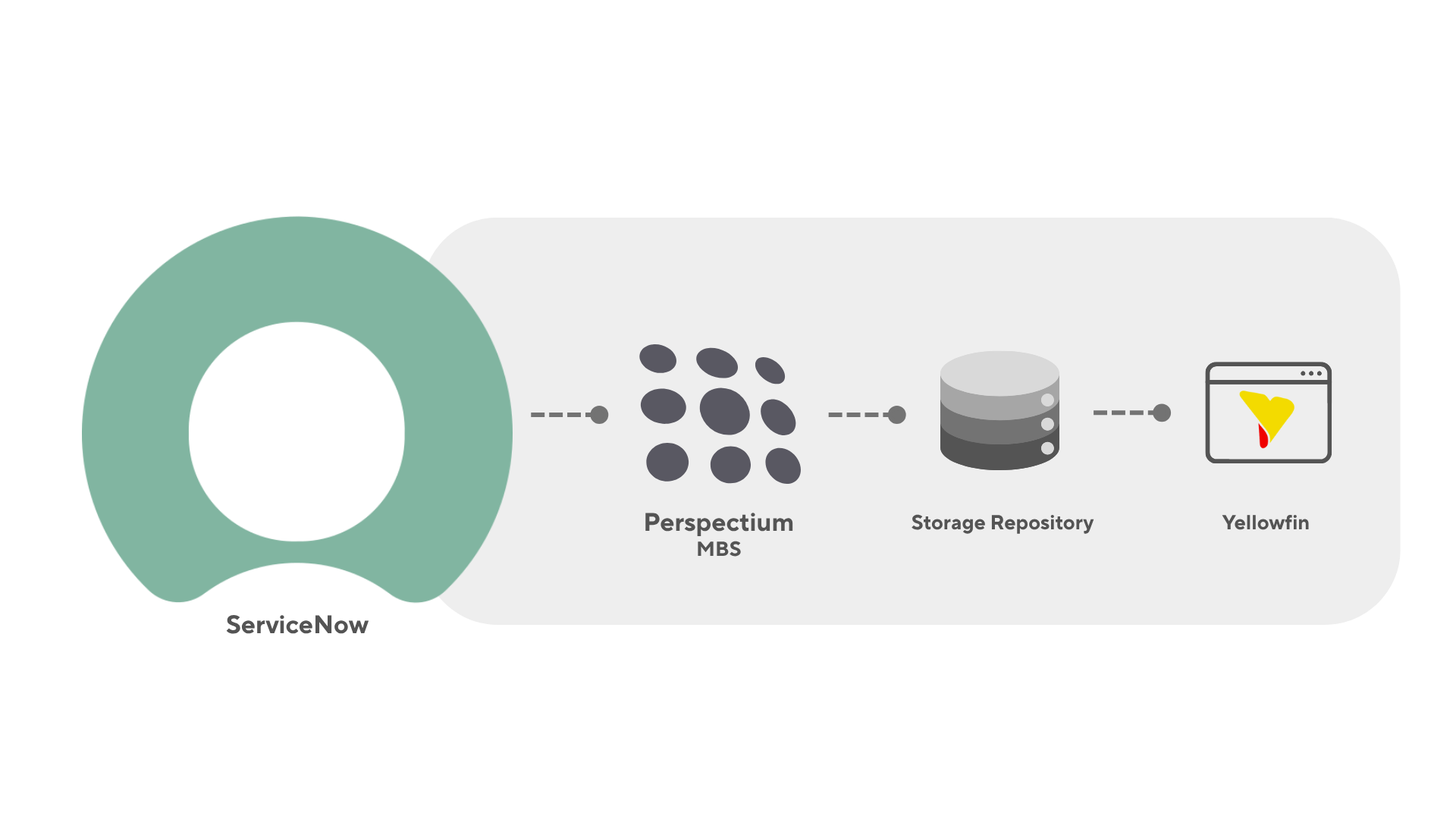
Integrating ServiceNow with Yellowfin through Perspectium provides a streamlined and efficient way to move data while ensuring reliability and performance. Here’s how the integration works:
1. Perspectium Is Installed within ServiceNow
Perspectium is implemented natively, within the ServiceNow platform, ensuring tight coupling with the platform’s architecture. Unlike traditional connectors that rely on external API queries or batch-heavy ETL jobs, Perspectium uses event-driven, natively triggered push-based replication. This method allows data to be transferred out of ServiceNow far more efficiently than external calls can query and retrieve data. As such, Perspectium is able to replicate huge volumes of ServiceNow data in real-time, or in batches whilst ensuring that ServiceNow's performance is not impacted and API rate limits are avoided.
2. Data Is Routed Through Perspectium’s Message Bus (MBS)
Once the data is extracted, it is securely routed through Perspectium’s Message Bus (MBS). Records are encrypted in-transit, and at-rest within the MBS and then queued for transfer, decoupling ServiceNow from downstream processes. This means that multiple targets can retrieve data from the MBS without any additional strain on ServiceNow. It also prevents data loss in the event that the target is temporarily unavailable, as data remains safely stored in the queue until the target is back online, and transfer resumes.
3. Delivery to Analytics-Ready Storage
From the message bus, data is delivered to your preferred storage destination.
After being processed by the MBS, the data is transferred to your preferred analytics-ready storage. Perspectium supports a variety of repositories, including:
-
- Snowflake
- SAP/Hana
- MySQL
- PostgreSQL
- Oracle
- Microsoft SQL Server
- Amazon S3
- Azure SQL / Blob Storage
This flexibility allows Yellowfin to connect directly to a reliable data source, optimized for analytics and scalable for enterprise needs.
4. Yellowfin Ingests Analytics-Ready ServiceNow Data
Yellowfin then connects to the storage destination (e.g., a cloud data warehouse or SQL database), pulling ServiceNow data and data from other sources to create interactive dashboards, advanced visualizations, and cross-system analysis.
With the integrated ServiceNow data, Yellowfin users can:
-
- Build real-time dashboards to monitor ITSM metrics
- Blend ServiceNow data with other datasets
- Track KPIs such as MTTR, SLA breaches, change volumes, and risk exposure
- Identify trends or anomalies using Yellowfin Signals and Assisted Insights
Fully Managed as a Service by Perspectium
Perspectium implements ServiceNow-to-Yellowfin integrations on the end-user’s behalf, taking care of everything from the initial configuration within ServiceNow and the Perspectium Message Bus (MBS) to the delivery of data into your selected repository and ultimately to Yellowfin.
Once the integration is deployed, Perspectium maintains the MBS, ensuring it stays compatible through new versions of ServiceNow, and provides support 24/7, 365. By delivering its applications as a managed service, Perspectium ensures resilience, uptime, and optimal performance, even during organizational changes such as team turnover or system upgrades.
While Perspectium handles the technical aspects of the implementation, customers maintain full control over how their data is transferred and stored. You also retain exclusive ownership of encryption keys, meaning Perspectium never has access to your data.
Perspectium’s approach allows organizations to focus on their core operations while Perspectium handles the complexities of data integration and management.
Key Advantages of Using Perspectium for ServiceNow to Yellowfin Integration
By choosing Perspectium for your ServiceNow to Yellowfin integration, your organization establishes a secure, scalable, and reliable data foundation that enables Yellowfin to provide complete, trustworthy insights. This empowers better decision-making and enhances ITSM performance across the business.
Connect ServiceNow to Your Enterprise

Integrate ServiceNow with Yellowfin and your other enterprise solutions, and transfer over 40 million ServiceNow records every day.
Use Cases for Connecting ServiceNow to Yellowfin with Perspectium
Integrating ServiceNow with Yellowfin through Perspectium unlocks valuable insights by converting raw service data into actionable business intelligence. With real-time, high-throughput data replication and no impact on ServiceNow performance, Perspectium ensures teams can make timely, data-driven decisions in operational processes, service delivery, and strategic planning.
1. Create a Unified View Across Business Systems
Perspectium enables you to integrate ServiceNow data with other business systems like Salesforce, Jira, SAP, Oracle, and HR platforms, all within Yellowfin. This unified view allows organizations to:
- Achieve cross-functional visibility, connecting IT incidents to broader business processes.
- Link service performance with customer and financial outcomes.
- Maintain end-to-end transparency across support, operations, and business teams for a more comprehensive perspective on organizational health.
2. Drive Visual Decision-Making with Yellowfin
Yellowfin’s intuitive dashboards, Signals, and data storytelling features become more powerful when fueled by accurate, real-time data from ServiceNow. With Perspectium managing the replication, your teams can:
- Track trends in incidents, changes, and problems with greater clarity.
- Visually monitor SLA adherence and resolution speed.
- Proactively uncover risks with Yellowfin’s automated alerts, giving teams a head start on problem-solving.
3. Enable Real-Time, Automated Data Flows
Perspectium supports both real-time and scheduled data replication from ServiceNow to Yellowfin-compatible data repositories. This ensures your Yellowfin environment benefits from:
- Instant data refreshes as events happen in ServiceNow, keeping your insights up-to-date.
- The elimination of delays caused by manual exports or overnight ETL processes.
- The ability to use live dashboards that facilitate agile decision-making.
4. Empower Business Users with Self-Service Analytics
With data replicated outside of ServiceNow, Yellowfin users—whether or not they have ServiceNow access—can explore and visualize data on their own. This leads to:
- Role-based access to ITSM data, allowing teams to gain insights without needing technical expertise.
- A reduction in reliance on ServiceNow developers for generating reports, enabling teams to generate their own insights.
- Increased organizational alignment by sharing common data narratives across business units.
5. Track ITSM KPIs in Context
By combining key ITSM metrics like incident response time, SLA compliance, and change success rates with relevant business KPIs in Yellowfin, organizations can:
- Create holistic performance dashboards for leadership and stakeholders.
- Align IT goals with business outcomes, leading to better strategy and execution.
- Foster accountability across departments, as all teams work from the same data set.
6. Reduce Complexity and Maintenance Workload
With Perspectium handling the integration from end-to-end, organizations can:
- Avoid technical debt caused by fragile, point-to-point integrations that require constant upkeep.
- Eliminate the risk of integration failures during ServiceNow schema changes.
- Free up internal teams from the manual maintenance of data pipelines, allowing them to focus on more strategic tasks.
7. Enforce Data Governance, Quality, and Security
Perspectium ensures your data remains secure and compliant throughout the replication process:
- Data is encrypted both in transit and at rest to protect sensitive information.
- Perspectium customers have full control over their encryption keys.
- Field-level obfuscation helps ensure PII protection and complies with data privacy laws like GDPR and HIPAA.
- Built-in automatic retries and queued delivery prevent data loss, even in the event of disruption.
8. Scale Yellowfin Analytics Without Hurting ServiceNow
Perspectium’s message bus decouples analytics processing from your ServiceNow instance, enabling:
- Preserved platform performance by ensuring ServiceNow isn’t bogged down by heavy data queries.
- The replication of millions of records daily, whilst maintaining responsive performance.
- Near real-time updates to Yellowfin without affecting ServiceNow’s speed or availability.
9. Consolidate Integrations and Future-Proof Your Data Architecture
By adopting Perspectium’s centralized solution, you can:
- Consolidate data pipelines, eliminating the need for multiple point-to-point integrations.
- Support multiple third-party solutions (Yellowfin, Snowflake, etc.) from a single source, simplifying your architecture.
- Ensure resilience against changes in business processes or technology platforms, future-proofing your data operations.
10. Improve Storage Efficiency and Long-Term Insights
By offloading reporting and analytics to Yellowfin, you can:
- Avoid ServiceNow storage overage fees by moving large volumes of data to external systems.
- Maintain long-term access to historical data without cluttering ServiceNow, allowing for better trend analysis over time.
- Enable more comprehensive storytelling and deeper insights by tracking data trends year over year.
FAQs: ServiceNow to Yellowfin Integration with Perspectium
1. What are the benefits of integrating ServiceNow with Yellowfin using Perspectium?
Integrating ServiceNow with Yellowfin via Perspectium provides real-time, high-throughput data replication to a Yellowfin-ready database. This allows Yellowfin users to quickly build interactive dashboards, identify trends, and share ITSM insights, all without burdening the ServiceNow platform with heavy data loads.
2. How does Perspectium differ from standard ServiceNow-to-Yellowfin connectors or ETL tools?
Standard connectors typically rely on APIs or scheduled ETL jobs, which can be fragile and difficult to scale effectively. Perspectium, on the other hand, operates natively within ServiceNow, utilizing a push-based message bus for asynchronous data replication, bypassing API rate limits, eliminating performance impact, and allowing it to scale for high-volume one-to-one and one-to-many replication.
3. Can Perspectium improve the performance of my ServiceNow instance?
Yes—many organizations see improved ServiceNow performance after replacing API-based or ETL integrations with Perspectium DataSync. Further, Perspectium also improves performance by offloading reporting—one of the most resource-intensive activities in ServiceNow—to external platforms like Yellowfin. This reduces load on your ServiceNow instance, helping maintain optimal performance while delivering real-time, actionable insights.
4. Can Perspectium handle large data volumes for Yellowfin analytics?
Yes, Perspectium supports the replication of over 40 million records per day, making it well-suited for organizations that need to move high volumes of ServiceNow data.
5. Does Perspectium support real-time updates in Yellowfin?
Yes, Perspectium provides real-time replication using user-defined triggers or business rules.
6. Can I blend ServiceNow data with other business systems in Yellowfin?
Absolutely. Once replicated to a supported data repository like Snowflake, MySQL, or SQL Server, ServiceNow data can be easily merged with other business data sources within Yellowfin, enabling unified dashboards and cross-functional reporting.
7. What happens if a data transfer fails or Yellowfin is unavailable?
Perspectium’s MBS protects organizations against data loss. If the destination system is unavailable, the data is queued and encrypted in the message bus until it can be delivered. Failed transfers are easily tracked and can be reprocessed using Receipts and the built-in Reshare feature, ensuring data integrity.
8. Is the integration secure?
Yes. With Perspectium, data is encrypted both in transit and at rest, and users retain exclusive control over encryption keys. It also offers field-level obfuscation to protect sensitive information, meeting compliance requirements such as GDPR and HIPAA, as well as internal security policies.
9. Do I need a ServiceNow developer to set up the integration?
No! Perspectium is implemented and maintained as a service, so our integrations are no-code, configure-only for end-users.
10. Does Perspectium support custom ServiceNow fields and tables?
Yes, Perspectium automatically recognizes and replicates custom fields, extended tables, and complex reference relationships in ServiceNow. This ensures that your Yellowfin environment accurately reflects your unique ServiceNow data model without additional manual mapping or post-processing.
11. What is the cost of using Perspectium for Yellowfin integration?
Perspectium is offered as a managed service, with pricing based on the volume of data replicated and the features used. This removes the need for costly internal development and ongoing maintenance, reducing the total cost of ownership. Check out Perspectium pricing here.
12. Can I use the same integration to connect to other storage platforms?
Yes, Perspectium supports integration with various repositories, such as Snowflake, Amazon S3, Azure, MySQL, and PostgreSQL. The repository then feeds the data into solutions downstream including Yellowfin, Power BI, Tableau, Microstrategy, and more.
13. How does Perspectium reduce long-term maintenance needs?
Perspectium automatically handles schema changes and provides retry mechanisms to limit the amount of time lost to failed data transfers, and the troubleshooting required to address errors. Further, as Perspectium is delivered as a managed service, Perspectium maintains the solution and MBS on behalf of the end-user, reducing dependency on internal teams and providing consistent performance over time.

